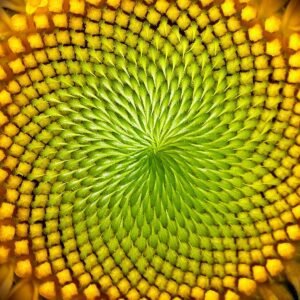The Flower of Life stands as a captivating symbol deeply rooted in sacred geometry. Revered across cultures, this intricate geometric figure is depicted in ancient temples, such as those in Abydos, Egypt. Each circle within the symbol represents a node of creation, suggesting an interconnectedness that permeates the universe.

Throughout history, the Flower of Life has been an emblem of balance and harmony. Its symmetrical patterns are believed to be a blueprint for the creation of all life, embodying an essence that transcends individual existence. This has led to its incorporation in various occult practices, including meditation and energy work, where it is thought to unlock profound insights into the fabric of reality.
In contemporary settings, the Flower of Life continues to influence artistic expressions and spiritual philosophies. It is seen as a reminder of the underlying unity and consciousness that ties all beings together. By exploring its geometric foundations and mystical significance, enthusiasts and scholars alike seek to uncover universal truths and the mysteries of creation.
Key Takeaways
- The Flower of Life is a symbol in ancient cultures reflecting creation and unity.
- It is used in meditation and energy practices, aiming to reveal universal patterns.
- Its influence continues in art and spirituality, symbolizing interconnectedness.
Historical Discovery and Significance
The Flower of Life is a sacred geometric figure found across various ancient cultures, embedded within structures noted for their spiritual significance. Its presence links diverse civilizations, suggesting a shared understanding of universal principles that transcend time and geography.
Ancient Origins of the Flower of Life
The Flower of Life is prominently seen in the Temple of Osiris at Abydos, Egypt. This site, known for its rich mythological significance, features intricate carvings that date back thousands of years. These carvings suggest that the ancient Egyptians may have associated the Flower of Life with cosmic order and spiritual harmony.
Ancient Egypt viewed geometry as a bridge between the material and spiritual worlds. The repeating patterns of the Flower align with their principles of symmetry and balance, crucial in their art and architecture. Its presence in these ancient temples indicates an early understanding of interconnectedness within the universe.
The Flower of Life in Global Sacred Sites
The pattern extends beyond Egypt, appearing in sacred sites worldwide, such as the Forbidden City in Beijing and the Golden Temple in Amritsar. These locations indicate the widespread recognition of its mystical qualities. Its presence suggests a shared belief in geometry as a universal language.
In Buddhist temples like Ajanta, the Flower of Life symbolizes enlightenment through understanding the divine structure of the universe. At Ephesus and in ancient Chinese temples, its presence in sacred architecture underlines a broader cultural appreciation for symbolism as a tool for spiritual expression, linking human consciousness with the cosmos.
Geometry and Mathematical Foundations

The Flower of Life combines intricate patterns and underlying mathematical concepts. Its design consists of interconnected circles, forming a visual that many believe holds keys to universal truths. Analyzing these geometric elements and their mathematical significance sheds light on its role in spirituality and science.
Geometric Shapes and Patterns
The Flower of Life pattern comprises equally spaced, overlapping circles. These circles form a complex lattice that displays symmetrical geometrical shapes. Among them, the vesica piscis is a notable shape, created where two circles intersect, symbolizing the joining of dualities and creation.
Within these circles, the arrangement follows recognizable patterns, such as those found in platonic solids. These solids serve as fundamental elements in sacred geometry, representing perfect symmetry. The repetition and overlap of these geometric shapes create a harmonious structure, central to the design’s meaning and spiritual significance.
Mathematical Principles in Sacred Geometry
Underlying the Flower of Life is the concept of the golden ratio, which appears frequently in its geometry. This ratio, often denoted by the Greek letter phi (φ), represents an aesthetically pleasing proportion seen throughout nature. The golden ratio connects closely with the Fibonacci sequence, as each number in the sequence approximates phi.
Another critical aspect is the Fibonacci spiral, derived from the sequence. This spiral emerges in the Flower of Life’s design, embodying growth patterns found in natural phenomena. Additionally, the precise mathematical properties of overlapping circles demonstrate the harmony and balance foundational to sacred geometry, emphasizing its potential to reflect universal truths.
The Flower of Life in Art and Culture

The Flower of Life has inspired artistic expression throughout history, from its presence in ancient art to its influence on modern artistic creation. This section explores its integration in sacred art and its popularity in contemporary design.
Depictions in Ancient Art
The Flower of Life frequently appears in sacred art, illustrating its significance across different cultures. In Egypt, for example, it can be found in the Temple of Osiris in Abydos. Here, it was intricately carved into the stone, representing a connection to eternal life as perceived by ancient civilizations.
This geometric design was not only a symbol of spirituality but also a key element in architectural motifs. It was often used to convey harmony and proportion. The precise and symmetric patterns found in this ancient art are believed to reflect the underlying laws of the universe.
Influence on Modern Art and Decor
In modern times, the Flower of Life has transcended its historical roots to influence various domains such as mandalas, tattoo designs, and home decor. Artists like Leonardo da Vinci explored its forms, possibly using it to study perspective and proportion.
Contemporary art and decor have adopted the Flower of Life for its aesthetic appeal and mystical symbolism. It is crafted into jewelry, printed on fabrics, and even tattooed on skin in a nod to historical reverence and modern spirituality.
Its presence today continues to embody a blend of ancient wisdom and artistic innovation, bridging cultures and centuries through the universal language of geometry.
Philosophical and Spiritual Interpretations

The Flower of Life is a geometric symbol that carries rich metaphysical and spiritual meaning. It plays a significant role in spiritual practices and is believed to hold the key to understanding universal truths.
Metaphysical and Symbolic Meanings
The Flower of Life is renowned for its sacred geometry, consisting of overlapping circles that form intricate patterns. This design is believed to symbolize the interconnectedness and unity of all life forms.
Its geometric precision is seen as a representation of the cycles of creation and the infinite nature of the universe. Often, it is viewed as a template from which all physical reality can be derived, symbolizing the oneness of existence.
In various mystical traditions, the Flower of Life serves as a visual metaphor for spiritual growth and understanding. The symbolic meanings attributed to this geometric icon emphasize harmony, balance, and the divine order of the cosmos.
The Flower of Life in Spiritual Practices
In spiritual contexts, the Flower of Life is used as a tool for meditation and energy work. Practitioners may focus on the symbol during meditation to align their energy fields and promote spiritual enlightenment.
This geometric pattern encourages introspection and is thought to unlock deeper layers of consciousness, aiding in the pursuit of inner peace and spiritual significance. Mystics believe engaging with the Flower of Life can foster a greater sense of unity and connectedness with the universe.
Its sacred meanings are leveraged in various rituals intended to amplify personal spiritual practices. Through its contemplative use, seekers aim to attain a greater understanding of universal truths and cultivate their spirituality.
Applications in Meditation and Energy Work

The Flower of Life is used in meditation to aid concentration and visualization, enhancing the experience of inner peace. In energy work, it is believed to contribute to balance and harmony by resonating with universal patterns.
Utilizing the Flower of Life for Meditation
The Flower of Life assists practitioners in meditation by focusing attention on its intricate geometric patterns. This promotes a deep state of relaxation and encourages a journey towards higher consciousness. Individuals often visualize the pattern during their practices, considering it a tool for accessing inner wisdom and universal truths.
Historically, the Flower of Life has been a focal point for study and meditation. By concentrating on its structure, the mind can reach greater clarity, enabling personal growth and self-awareness. Regular usage can be particularly effective for those looking to understand the interconnectedness of life and existence.
Energy Patterns and Harmonic Resonance
In energy work, the Flower of Life is valued for its potential to align the user’s energy with universal forces. Its symmetry and structures, including Metatron’s Cube, are believed to echo the energies of creation itself. These energy patterns reflect the cycle of life, promoting balance.
Practitioners often use the Flower of Life to facilitate energy flow, improve well-being, and support manifestation techniques. By harmonizing with these patterns, individuals seek to achieve physical and spiritual balance, fostering a sense of unity with the cosmos. Such practices aim to integrate mind, body, and spirit harmoniously for holistic health.
Universal Patterns and Theories of Creation
The Flower of Life illustrates an intricate pattern believed to demonstrate universal cycles and creation theories. This concept intertwines with other sacred geometries and philosophical ideas.
Blueprint of the Universe Concepts
The Flower of Life is often regarded as a blueprint for creation, representing the interconnectedness of all life forms. Its geometric configuration is composed of multiple evenly-spaced, overlapping circles, forming a flower-like pattern. Each circle symbolizes a component of creation, such as the Seed of Life, which signifies the potential for growth. The Egg of Life emerges next, associated with cellular division and the formation of life itself.
In addition, the Fruit of Life comprises 13 circles and is said to contain the fundamental elements of reality. These elements are thought to symbolize the universe’s laws and structures, offering insights into how life unfolds. Encompassing concepts like dimensions, this pattern proposes a harmonious structure underlying existence.
Interrelations with the Tree of Life and Other Concepts
The Flower of Life’s connection with the Tree of Life traces back to shared themes of connection and unity in existence. The Tree of Life outlines the path of spiritual enlightenment and balance through its ten interconnected spheres or sephirot.
These patterns are often linked with the cycle of creation, exploring how one stage flows into another. Each pattern, such as the Tree of Life or the Seed of Life, serves as a stage in the grand architectural design thought to guide the universe.
Concepts like dimensions feature prominently, exploring how different facets of geometry interact with metaphysical theories. The interaction between these different parts of sacred geometry seeks to uncover possible universal truths embedded within the patterns.
The Flower of Life Today: Cultural and New Age Perspectives
The Flower of Life remains a prominent symbol in various cultural and spiritual contexts. Today, its ancient allure permeates modern practices, symbolizing interconnectedness and universal patterns, with its impact seen in popular culture and spiritual movements.
Contemporary Usage and Popular Culture
The Flower of Life appears frequently in art, fashion, and home decor. Many individuals are drawn to its intricate design, associating it with sacred symbols that embody ancient wisdom and unity. As a sacred geometric symbol, it often features in jewelry designs, resonating with those seeking a sense of connection with history and spiritual meaning.
In media, it is showcased in films and TV shows, symbolizing deeper layers of consciousness and divine order. This geometric pattern is also explored in literature and video games, emphasizing its link to numerology and the symbolism of wholeness and unity. Enthusiasts and artists utilize its design to express modern interpretations, blending historical significance with contemporary aesthetics.
Modern Spiritual Movements and Interpretations
In New Age spirituality, the Flower of Life holds significant spiritual meaning and is frequently used in meditation and energy work. Practitioners believe it represents a blueprint for the universe, connecting individuals to the divine and enhancing consciousness.
It is often integrated into practices aimed at healing and balancing energy, seen as a tool to achieve harmony and understanding of divine order. Some modern interpretations suggest that it aids in unlocking universal truths, offering insights into the interconnected nature of existence. In some circles, it also finds relevance in medicine as a symbol of wholeness and unity, encouraging a holistic approach to health and wellbeing.
Frequently Asked Questions
The Flower of Life is a potent symbol in sacred geometry with its roots in numerous spiritual and mystical practices. It holds significance not only in ancient religions but also in modern meditation and energy work, illustrating a deep connection between art, nature, and spirituality.
What is the significance of the Flower of Life in sacred geometry?
The Flower of Life is seen as a foundational geometric design, representing the interconnectedness of all life. Often described as a blueprint for creation, its symmetrical pattern is believed to contain vital information about the universe and the structure of life itself.
How is the Flower of Life connected to spiritual awakenings and enlightenment?
Many practitioners consider the Flower of Life a tool for spiritual awakening, assisting in meditation and self-discovery. Its geometric perfection is thought to help align and balance energy, facilitating insight and a deeper understanding of one’s place in the universe.
In what ways is the Flower of Life represented in religious and ancient art?
The Flower of Life appears in various religious artifacts and ancient art, notably in diverse cultures such as Egyptian and Christian traditions. This symbol often decorates temples, manuscripts, and other sacred sites, suggesting its historical importance as a representation of divine harmony.
What role does the Flower of Life play in various spiritual practices and energy work?
In spiritual practices, the Flower of Life is used to enhance meditation and visualization techniques. Energy workers may also use this symbol to balance chakras, aid in healing practices, and foster a sense of unity and connection with universal energies.
How do the concepts of the Flower of Life manifest in nature and the universe?
Patterns reminiscent of the Flower of Life can be seen in natural phenomena such as the formation of snowflakes, the arrangement of leaves, and the fractal patterns found in shells and galaxies. These occurrences emphasize the symbol’s reflection of natural harmony and universal order.
What is the historical relevance of the Flower of Life pattern found in temples such as Abydos, Egypt?
In Abydos, Egypt, the Flower of Life is carved into temple walls, underscoring its ancient significance. Historians and archaeologists view these carvings as evidence of its longstanding importance, suggesting it may have been used as a talisman or teaching tool in ancient spiritual and religious contexts.


